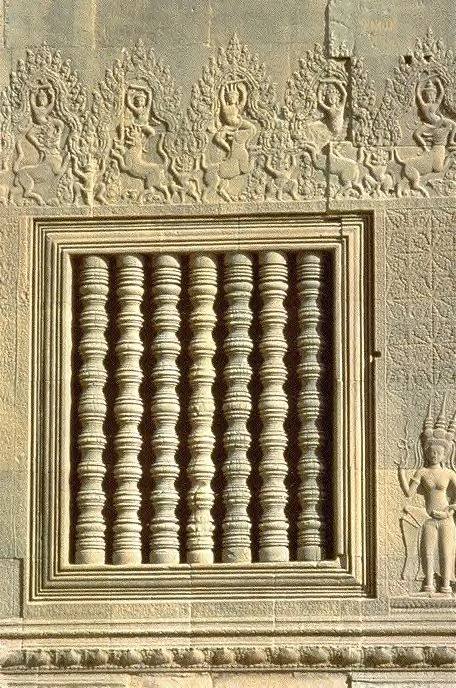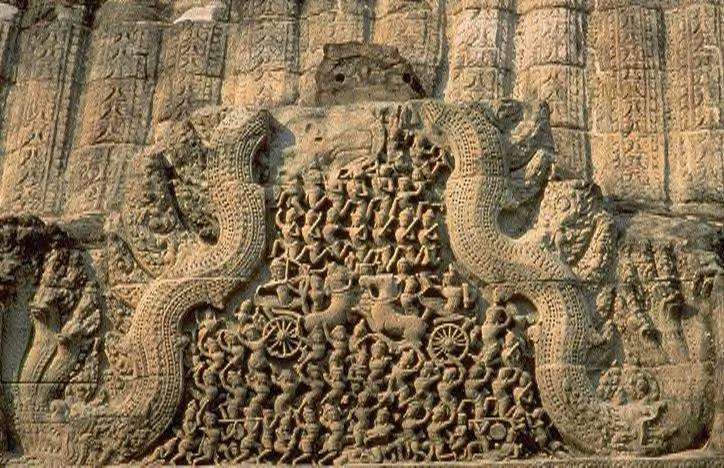JOURNAL OF MY TOUR BY JEEP OF THAILAND, CAMBODIA AND VIETNAM
NOVEMBER, 1956 , page19
|
From gallery 3, one obtains a clear view of the blind walls of gallery 2, made more vivid by the false windows consisting of artfully turned stone pillars, of which many are broken and thus break the monotony. The highest and steepest stairs lead to the highest gallery, four. Especially the corner stairs are artful but grotesk. Without much esthetic damage, some cement has been added to make the badly worn steps more passable. The entire reconstruction and cleanup of Angkor , is, indeed, very well executed and beyond critique. When I returned to Angkor in May of the Holy Year 2,500 B.E. ("half-time"), the center was filled with pilgrims lighting incense and prostrating themselves before the Buddha image in an alcove. Two gamelan orchestras played continuously which caused strange reverberations in the ruins. I missed the solitary enjoyment of my first visit, and judging from recent statistics, will have to forego that pleasure in future: 1999: 147,000 visitors; 2000: 194,000; anticipated growth to 600,000 by 2004 and 1 million by 2008 C.E. |
 photographs of Angkor by Leiden University |
 Photo Gallery of Angkor Ruins |
 What makes a strong impression in Angkor Wat is the detailed ornamentation. Towers appear to consist of piles of wreaths formed of lotus flowers, which undoubtedly showed even greater detail in earlier times. Every door, every pillar, is decorated with such rich motives as flowers, trees, tevodas- heavenly dancers with characteristic attitudes - and apsaras - heavenly servant girls with the most fantastic hairdoes; all in endless repetition and even carried through to such places as would be invisible, e.g. down at the very base. Neverthelesss, a certain restful decorum is maintained and the decorations do not distract from the main theme: the sepulchre of Suryavarman II. |
|
BLO fecit 20010816 corr.20020216 |
comments, please? |
next page |
contents autobiography |